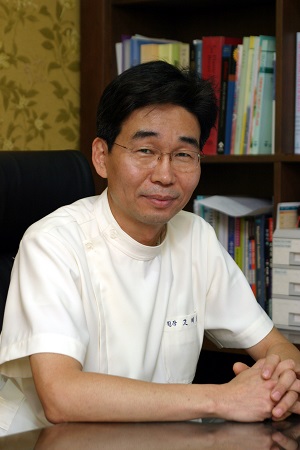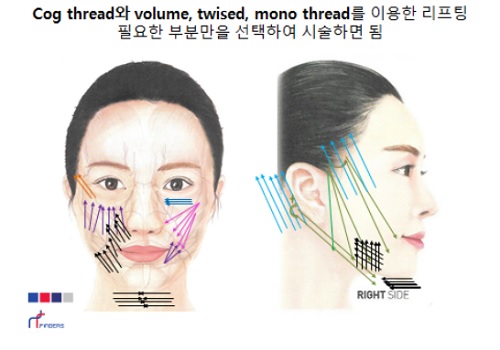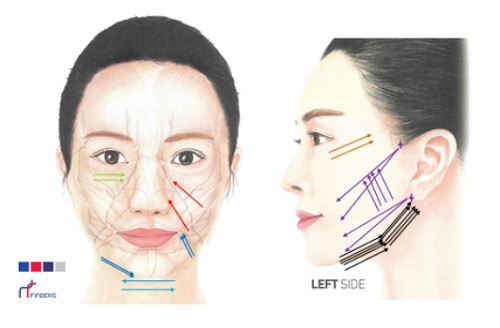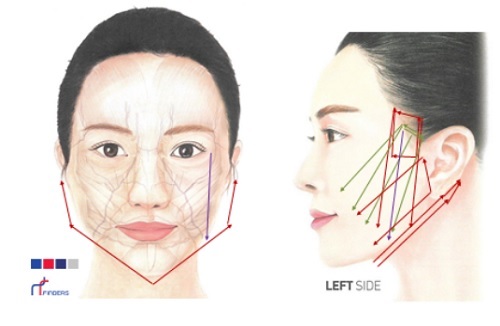
I assume that the public’s perceptions of thread lifts depend on the experience of individuals and the people around them. Best results are achievable when all aesthetic, cosmetic procedures consider patients’ current conditions and want.
Because lifting and tightening cannot resolve all dents or protruded areas, communication between a provider and customer is essential when consulting and designing plans beforehand.
Consulting topics include not only facial changes seen when a provider lifts or pulls treatment sites while showing the patient a mirror, but also procedure results. Plus, considering which direction to pull with strong and long threads, with short and light threads, or towards dents, depending on the patient’s condition, is necessary.
Recently, various products that naturally improve hollow parts and fine lines have been produced. When using the appropriate thread in the right place, not only it lifts the whole face but also fills hollow areas and improves horizontal wrinkles (forehead, neck, etc.) and wrinkles around the mouth, under the eyes, or nasolabial folds caused by constant movement.
The thread lift market in Korea owns the most various and great products in the world. Practitioners who visit from Europe, Japan, etc. for training often become awestruck with numerous threads and techniques in Korea.
Currently, the most commonly used thread is called PDO threads, which dissolves within 6~8 months, having a disadvantage of having a short maintenance period of about a year. But last year, a thread created with PCL material, which takes two years to dissolve, is invented and expected to have a duration of more than two years.
For doctors to perform thread lifts well, understanding facial and cervical anatomy, especially functional anatomy, is required. Not to mention understanding blood vessels and innervation in dangerous areas is vital.
Although thread lift seems to be a simple procedure, accurate and deep understanding of anatomy is necessary because it is a closed procedure where doctors do not look inside the skin but use senses and predictions.
Customers should receive the treatment from a provider who is well-experienced and knowledgeable. Doctors in the field of aesthetics, plastic surgery are actively participating in studies and discussions in groups and conducting the world’s leading researches in the specialty.
Any surgeries and procedures can bring unwanted results or complications. But those caused by thread lifts are mostly solvable, and serious complications barely occur when prepared, experienced doctors perform the procedure. Examples of serious complications are damages in the nerves, blood vessels, or parotid, but these rarely happen.
Unwanted results include asymmetry, partial dents, hollow horizontal lines, thread transference, protruded skin, retracted injected areas, bigger zygoma, and scaly skin, wrinkles, or discoloration of the lifted, upper areas.
These events can be solved with additional simple procedures. The treatments can be done as shown below in various designs and procedure methods while considering the patient’s condition or want.




In addition to lifting and filling, as shown above, the special-shaped thread fusion (TAPS-Ko Rhinoplasty) and procedures for the horizontal wrinkles of the forehead or neck can also be effective (photo by Nfinders).


